Base stations: how it all began
The first fossil remains of base stations of the family of mobile television systems in the Moscow region date back to 1994. These were real dinosaurs - huge and with a small amount of functional brain . Outwardly, they looked like a large refrigerator, they worked only in one standard and in one frequency range. The first MTS base station in Moscow worked in the GSM standard and only in the 900 MHz frequency band.
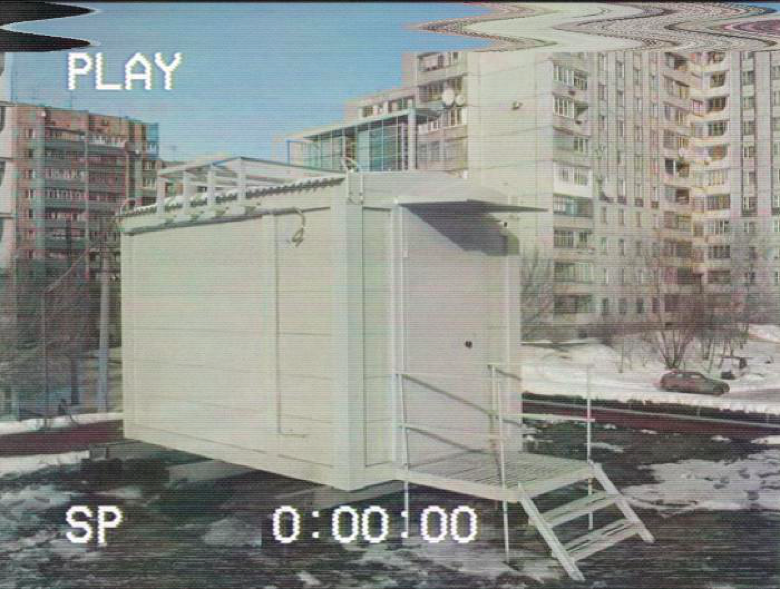
What did the “dinosaurs” of cellular communication consist of and how they evolved to this day will be told by the expert of the department of architecture of the radio access network of MTS company Konstantin Luchkov. His nickname Luchkov Pass the word to him.
')
Hello! Let's take a look at this “fridge” right away.

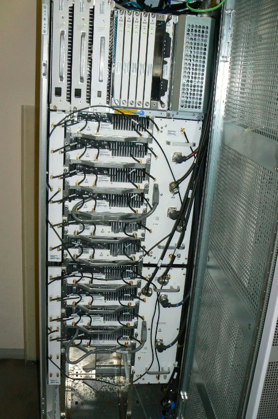
Power supplies, control boards and a transport card are mounted on the top shelf. Slightly lower, in the “freezer compartment”, transceivers and duplexers lie in piles.
And here is a typical small-sized (but very cozy) “kitchen” of those times, in which our “dinosaur” lived.

The "kitchen" was tightly packed with telecommunications equipment. This is the power supply system, air conditioning system, a rack with transport equipment (for example, radio relay equipment). Each of these systems, commensurate in size with BS, was a separate cabinet. By the way, each “kitchen” had a table and a chair (on the left in the photo).

But back to our "dinosaur". From the top cover of the base station stretched thick feeder (two fingers thick), which left the container to the antennas. The typical length of the feeder path was about 70 meters, two feeders were fed to each antenna (exploded reception was used). There were three antennas in a typical single-band station. That is, six feeder routes were laid at the first stations, and later (when a new GSM1800 band appeared) six more.
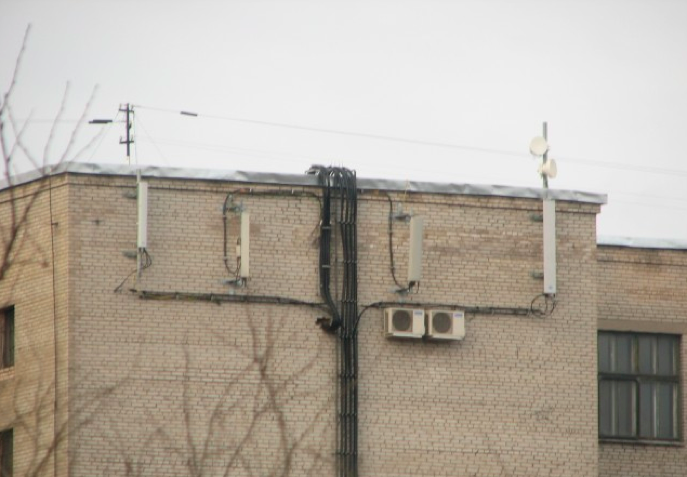
One of the main disadvantages of using feeder paths was the loss of signal power, which is directly proportional to the length of the feeder path and the frequency range used. These shortcomings prompted the evolution of base station equipment to a new level of development.
Ten years after the appearance of the first cellular base station in the Moscow region, in 2004, there were critical changes in the telecommunications environment. A new interface for controller interaction with BS radio modules - CPRI (Common Public Radio Interface) has appeared.
The old “refrigerators” were replaced by a new type of base station - with a distributed architecture. Steel do not need bulky feeder routes. The base station split into a system module (BS brain) the size of an office manager case and a transceiver (also known as RRU, remote radio unit) connected via an optical line through the CPRI radio interface. From the feeder there are only rudiments in the form of short jumpers (1-3 meters) connecting the transceiver with the antenna. In addition to the existing GSM, UMTS and LTE standards have been introduced. Base stations of outdoor performance appeared, for which accommodation no longer needed a room ("kitchen").

Distributed BS turned out to be much more adapted to life. They became smaller and easier to place. Reduced electricity consumption, as the power loss in the feeder disappeared. There is a new functionality.
Until a certain time, each standard required its own equipment — separate transceivers (RRU), separate system modules (SM), and separate antennas. After almost another ten years, in 2013, the Ministry of Communications of Russia allowed technological neutrality, which made it possible to implement the LTE standard on GSM900 / 1800 frequencies. It should also be noted that even earlier, in 2011, the technical neutrality of GSM / UMTS900 was resolved. New requirements were made to the equipment of the base station, which had to be met - the size of the stations decreased, and thebrain's functionality grew.
Transceivers have learned to support operation in three standards: GSM / UMTS / LTE. Now a typical case is the simultaneous operation of a transceiver in two standards, for example, in GSM / LTE1800. This mode of operation is called RF-sharing.
Then it became necessary to work simultaneously in different standards of system modules. This functionality is called single RAN (unified radio subsystem equipment for several standards) and it has already been implemented on the MTS network.
The emergence of new standards (such as LTE), as well as more complex functionality has led to increased requirements for synchronization accuracy. Accuracy of phase (or time) synchronization was required, which immediately affected the composition of the base station. A GPS / Glonass satellite synchronization module has been added to its structure.
A new subspecies of compact base stations - small cell. It is a compact base station with a size of no more than a box from under sneakers, which combines in a single case the system module, transceiver, GPS / Glonass module and, as a rule, antenna.
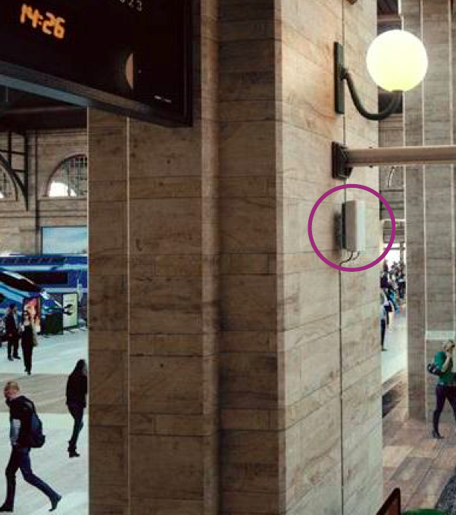
The compactness of the small cell allowed the MTS to install stations almost anywhere: in subway cars, cafes and office buildings. By the way, if you wish, each MTS subscriber can buy a compact base station. The station will automatically connect to the network core when connected to the Internet.
The bright future of cellular communication is the 5G standard (you can read more about it here ). Base stations will inevitably have to change again, since the 5G standard implies the use of large MIMO orders, which makes it impossible to connect the transceiver to the antenna via a jumper. Too many jumpers will need: 16, 32, and maybe 64. The radio module will be integrated into the antenna. This solution is called the active antenna system (AAS - active antenna system).
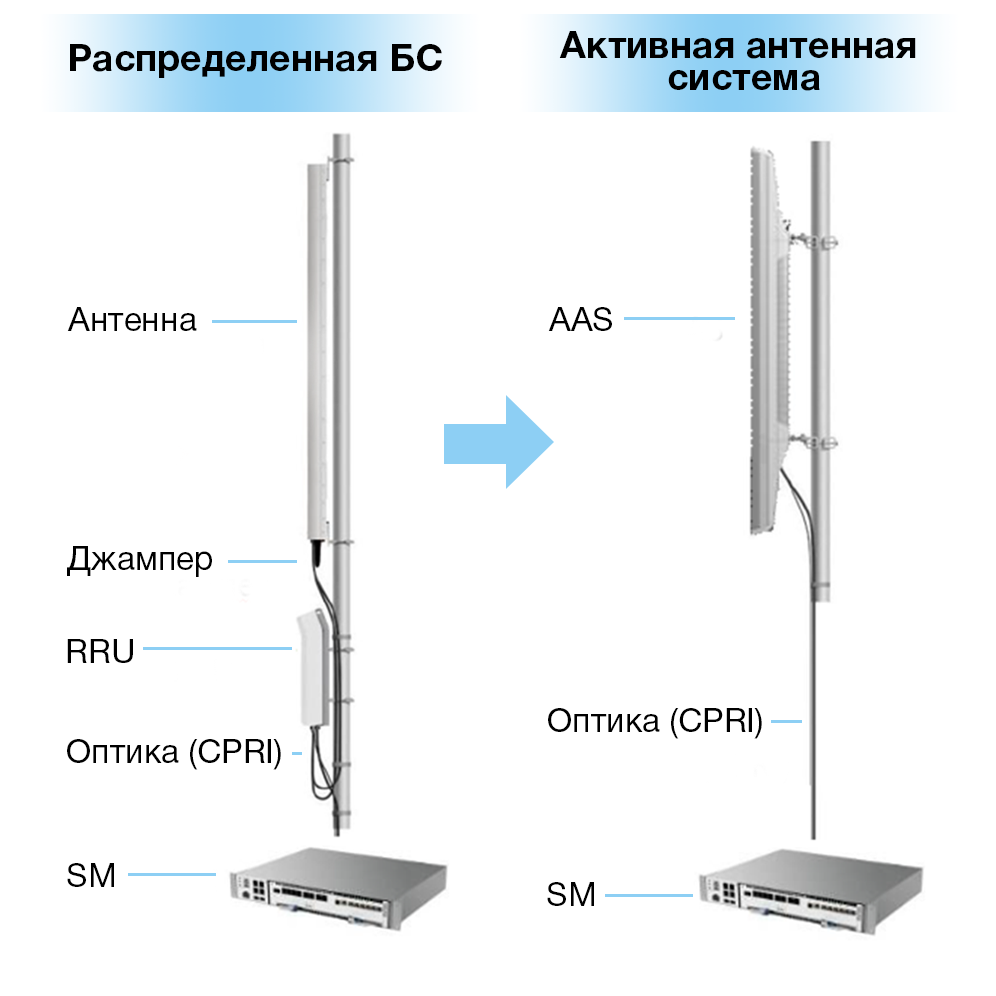
In appearance, the AAS is not distinguishable from a conventional cellular antenna, but look at how many elements of the base station it has inside.
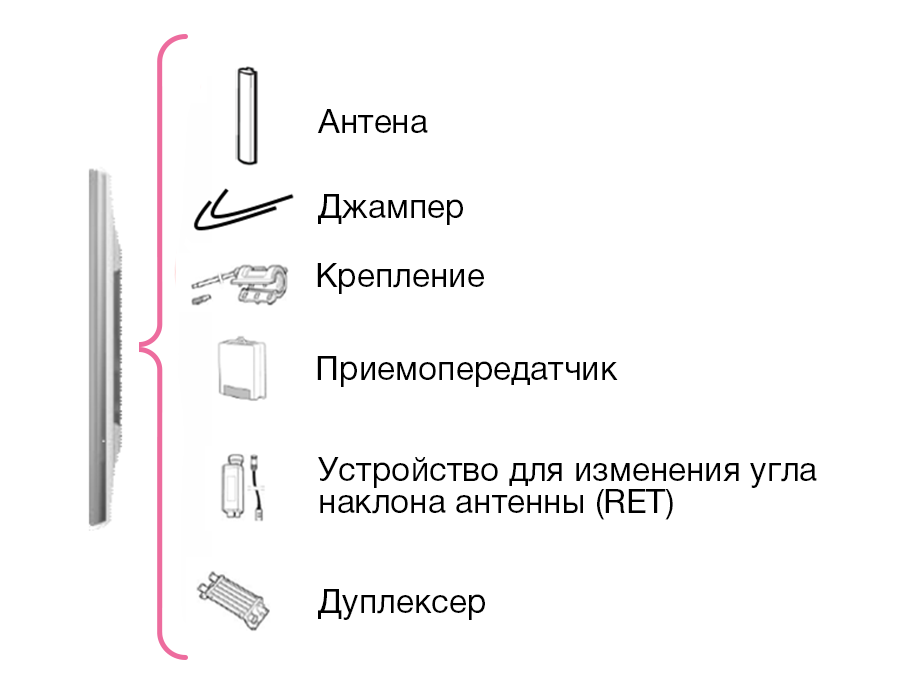
The base station implemented on the AAS solution is now a system module (SM) connected to an “antenna” (to an AAS). A hybrid variant is also possible when the active antenna system includes several active bands (several transceivers of active bands) and at the same time supports the connection of several passive bands. For the passive ranges, separate RRUs are used that are not part of the active antenna system.
But the evolution of base station equipment will certainly not stop there. One of the possible scenarios in the future could be the transition to the cloud (cloud) architecture of the base station equipment. Perhaps one day we will be able to completely abandon the use of the system module. Only one unit will remain at the base station - an active antenna system with integrated system module functionality that will be connected via an optical transport line to the network core.
In conclusion, I would like to note with pride that MTS is at the forefront of 5G testing and is already actively using on the network:
• BS 5G-ready equipment;
• BS cloud-ready equipment;
• AAS equipment (a network of several Russian cities is fully implemented on AAS).

What did the “dinosaurs” of cellular communication consist of and how they evolved to this day will be told by the expert of the department of architecture of the radio access network of MTS company Konstantin Luchkov. His nickname Luchkov Pass the word to him.
')
Hello! Let's take a look at this “fridge” right away.


Power supplies, control boards and a transport card are mounted on the top shelf. Slightly lower, in the “freezer compartment”, transceivers and duplexers lie in piles.
And here is a typical small-sized (but very cozy) “kitchen” of those times, in which our “dinosaur” lived.

The "kitchen" was tightly packed with telecommunications equipment. This is the power supply system, air conditioning system, a rack with transport equipment (for example, radio relay equipment). Each of these systems, commensurate in size with BS, was a separate cabinet. By the way, each “kitchen” had a table and a chair (on the left in the photo).

But back to our "dinosaur". From the top cover of the base station stretched thick feeder (two fingers thick), which left the container to the antennas. The typical length of the feeder path was about 70 meters, two feeders were fed to each antenna (exploded reception was used). There were three antennas in a typical single-band station. That is, six feeder routes were laid at the first stations, and later (when a new GSM1800 band appeared) six more.

One of the main disadvantages of using feeder paths was the loss of signal power, which is directly proportional to the length of the feeder path and the frequency range used. These shortcomings prompted the evolution of base station equipment to a new level of development.
Ten years after the appearance of the first cellular base station in the Moscow region, in 2004, there were critical changes in the telecommunications environment. A new interface for controller interaction with BS radio modules - CPRI (Common Public Radio Interface) has appeared.
Chapter 2. Present
The old “refrigerators” were replaced by a new type of base station - with a distributed architecture. Steel do not need bulky feeder routes. The base station split into a system module (BS brain) the size of an office manager case and a transceiver (also known as RRU, remote radio unit) connected via an optical line through the CPRI radio interface. From the feeder there are only rudiments in the form of short jumpers (1-3 meters) connecting the transceiver with the antenna. In addition to the existing GSM, UMTS and LTE standards have been introduced. Base stations of outdoor performance appeared, for which accommodation no longer needed a room ("kitchen").

Distributed BS turned out to be much more adapted to life. They became smaller and easier to place. Reduced electricity consumption, as the power loss in the feeder disappeared. There is a new functionality.
Until a certain time, each standard required its own equipment — separate transceivers (RRU), separate system modules (SM), and separate antennas. After almost another ten years, in 2013, the Ministry of Communications of Russia allowed technological neutrality, which made it possible to implement the LTE standard on GSM900 / 1800 frequencies. It should also be noted that even earlier, in 2011, the technical neutrality of GSM / UMTS900 was resolved. New requirements were made to the equipment of the base station, which had to be met - the size of the stations decreased, and the
Transceivers have learned to support operation in three standards: GSM / UMTS / LTE. Now a typical case is the simultaneous operation of a transceiver in two standards, for example, in GSM / LTE1800. This mode of operation is called RF-sharing.
Then it became necessary to work simultaneously in different standards of system modules. This functionality is called single RAN (unified radio subsystem equipment for several standards) and it has already been implemented on the MTS network.
The emergence of new standards (such as LTE), as well as more complex functionality has led to increased requirements for synchronization accuracy. Accuracy of phase (or time) synchronization was required, which immediately affected the composition of the base station. A GPS / Glonass satellite synchronization module has been added to its structure.
A new subspecies of compact base stations - small cell. It is a compact base station with a size of no more than a box from under sneakers, which combines in a single case the system module, transceiver, GPS / Glonass module and, as a rule, antenna.

The compactness of the small cell allowed the MTS to install stations almost anywhere: in subway cars, cafes and office buildings. By the way, if you wish, each MTS subscriber can buy a compact base station. The station will automatically connect to the network core when connected to the Internet.
Chapter 3. Future
The bright future of cellular communication is the 5G standard (you can read more about it here ). Base stations will inevitably have to change again, since the 5G standard implies the use of large MIMO orders, which makes it impossible to connect the transceiver to the antenna via a jumper. Too many jumpers will need: 16, 32, and maybe 64. The radio module will be integrated into the antenna. This solution is called the active antenna system (AAS - active antenna system).

In appearance, the AAS is not distinguishable from a conventional cellular antenna, but look at how many elements of the base station it has inside.

The base station implemented on the AAS solution is now a system module (SM) connected to an “antenna” (to an AAS). A hybrid variant is also possible when the active antenna system includes several active bands (several transceivers of active bands) and at the same time supports the connection of several passive bands. For the passive ranges, separate RRUs are used that are not part of the active antenna system.
But the evolution of base station equipment will certainly not stop there. One of the possible scenarios in the future could be the transition to the cloud (cloud) architecture of the base station equipment. Perhaps one day we will be able to completely abandon the use of the system module. Only one unit will remain at the base station - an active antenna system with integrated system module functionality that will be connected via an optical transport line to the network core.
In conclusion, I would like to note with pride that MTS is at the forefront of 5G testing and is already actively using on the network:
• BS 5G-ready equipment;
• BS cloud-ready equipment;
• AAS equipment (a network of several Russian cities is fully implemented on AAS).
Source: https://habr.com/ru/post/342602/
All Articles